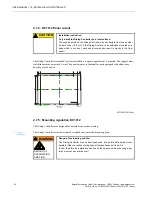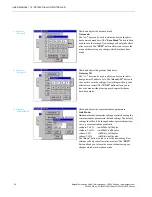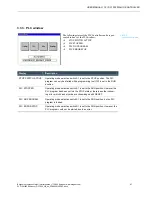
USER MANUAL 1.10 | DC1000 DIALOG-CONTROLLER
Berghof Automation GmbH | Harretstrasse 1 | 72800 Eningen | www.berghof.com
DC1000_HB_en_2D0982010ZD00.docx | 2VF100107FE10.docx
54
NOTICE
For using the symmetrical terminating resistor (S4) on the inoperative
bus:
On an inoperative bus the terminating resistor causes a qualitatively un-
stable signal state, which can give rise to faulty received data.
Background information:
Thanks to the differential signal transmission the RS485 interface achieves a
high signal-to-noise ratio and facilitates high data rates and great ranges. An
operative bus with defined states -
logical ‘1’ (A-B < -0.2 V) or logical ‘0’ (A-B >
+0.2 V) - is prerequisite for a high symmetrical signal-to-noise ratio. In an inop-
erative bus the signals highly resistive and hence susceptible to interference.
Thanks to the terminating resistor, which can be activated, a signal state is
produced with a low voltage difference between lines A and B.
There are two measures which can prevent this state:
An appropriate log ensures that one of the bus subscribers operates the
bus actively at all times.
If the state of the inoperative bus is to be kept under control, a sufficient
signal-to-noise ratio must be established by means of an asymmetric bus
termination (at the same time reducing the symmetrical signal-to-noise
ratio). With a suitable resistance network as the line termination, a voltage
difference between the signals can be produced in an inoperative state.
Generally speaking, it is impossible to specify favorable dimensioning be-
cause it is affected by the length of the bus and transmission rates. By
way of example, reference is made to the line termination in the case of
the Profibus.
NOTICE
How to connect "GND":
Despite differential signal transmission, depending on the topology and
length of the connected lines, it may be imperative to connect ground
reference (GND) may be imperative!
The longer the line the greater the potential differences between bus subscrib-
ers may be. In such cases, despite potential isolation, common-mode interfer-
ence may exceed voltage limits, causing differential signal interference and
hence a functional disorder. It is urgently advised to carry along the “GND” sig-
nal for potentially isolated interfaces, with a connection to the reference ground
in one spot. An attenuating connection, for example via 200 Ω at multi-ple
points on the bus.






























